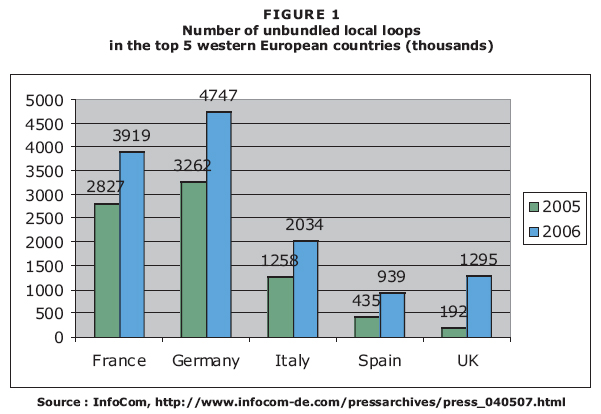|
Not so natural monopolies |
To understand the logic underlying this measure, it is necessary to
go back a little, to the time when the telecommunications market was
first opened to competition.
The telecommunications sector, like transport and electricity
distribution networks, has the characteristic of relying on
infrastructure that is hugely costly to build and that, to be
profitable, must connect the greatest possible number of access
points. These costs, and the constraints of physical space, mean
that the dynamics of this sector do not correspond to the
traditional vision of competition. It is hard to imagine many
similar networks being superimposed to serve the same customers. The
first company to build an extensive network will always have a big
head start over the others.
For this reason, the conventional economic viewpoint has always
regarded telephone services as a “natural monopoly,” in other words
a sector whose very nature makes it impossible or highly improbable
that two producers will be competing with each other. Throughout the
world, telecommunications thus became a public utility controlled by
the state, so as to prevent any individual company the chance to
derive undue profit from the exploitation of this natural monopoly.
This way of seeing things has changed, however, and it is recognised
now that it is, in fact, possible for competitors to enter the field
by replicating at least part of the existing network and/or by using
different technologies to provide the same service. Thus, it is
possible nowadays to have a telephone conversation in various ways:
by sending an analogue or digital (IP) signal on traditional
wireline networks, by using software on a computer connected to the
Internet, by cable, by mobile telephone, and so on.
When the legal monopolies of incumbent operators in traditional
telephone services were abolished, regulators intervened with the
aim of offsetting the complete market domination these operators had
enjoyed for decades and creating a new balance between them and
their new competitors. In particular, they forced the former
monopolies to lease parts of their networks at advantageous rates to
the new entrants, enabling the latter to provide telephone and
Internet services without having to replicate the full
infrastructure throughout their territory. A company may thus
typically install its own fibre optic network between cities and
lease the local loop (the copper wires connecting the switch with
each home), thereby reaching customers directly.
|
Preventing discrimination |
Incumbent operators thus found themselves selling retail services to
individual customers and at the same time leasing wholesale services
(for instance, local loop access, an operation referred to in
industry jargon as “unbundling”(2))
to their competitors so that the latter can sell the same retail
services.(3)
One can easily imagine the conflicts of interest that may arise from
such a situation within a company. In order to maintain its market
domination, it could have an incentive to provide its competitors
with wholesale services of lesser quality than those it uses itself.
To prevent former monopolies from engaging in this type of
discrimination and using their dominant positions to prevent the
emergence of strong competitors, regulators have turned to various
solutions, including quality control of wholesale services,
accounting separation, and a prohibition on the sharing of certain
information between the units in charge of network management and
those selling retail services. In most countries where such measures
have been imposed judiciously, they have provided for the emergence
of alternative operators that are sufficiently dynamic to invest in
setting up their own networks and to compete directly with the
former monopolies.
Functional separation is a variation on this type of solution, but
it goes much further. It breaks up an operator’s vertical
integration and involves the creation of a fully separate division
in charge of network management to eliminate any ability or
incentive to discriminate against competitors. It is offered as a
radical type of intervention in cases where more moderate measures
would not have succeeded sufficiently in encouraging unbundling. But
is this remedy really necessary or effective?
The case of Britain, often used to show the pertinence of imposing a
reorganisation as drastic and costly as this, is far from
conclusive. In that country, local loop unbundling did not have much
success in the early years after the opening of access in 2001. In
2005, the market share held by BT (formerly British Telecom) in DSL
broadband lines—directly or through resellers—was still over 99%.
This failure led to measures that included the functional separation
of BT and the creation of an entity called Openreach to manage the
network.

Since then, the number of local loops leased by alternative
operators has exploded (see Figure 1). But this phenomenon, far from
being limited to Britain, has affected all European countries. If
Britain has seen a high relative increase, it should be noted that
other countries have achieved higher levels of unbundling using
different methods. This is especially true of Germany and France,
which have not turned to functional separation.
|

